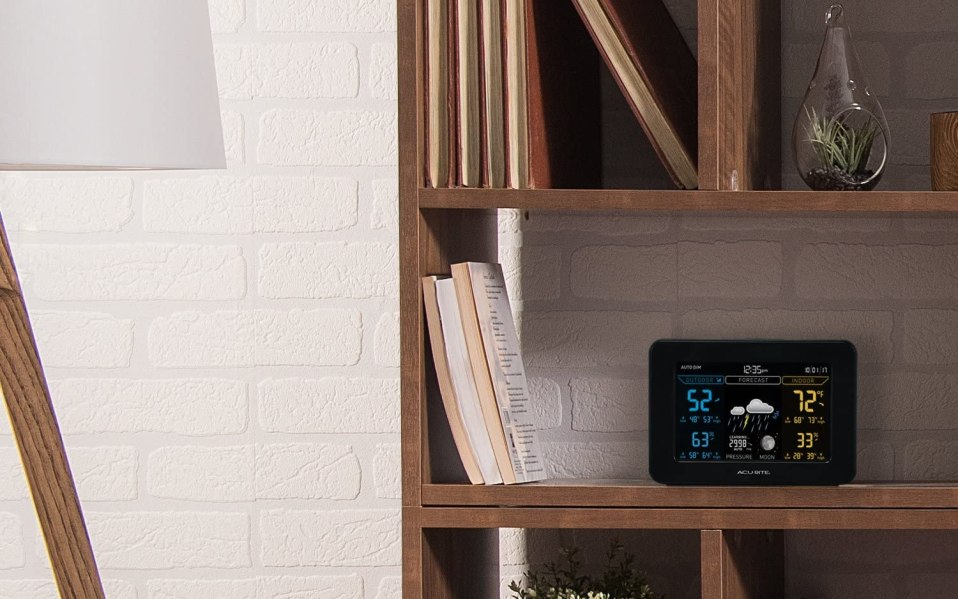Many individuals want to go to different places in a world with improved tourism. Some people are unable to travel and are forced to cancel their weekend or vacation plans. Their failure can be attributed to a number of factors. The monsoon season is one of them. Due to the snow and rain, tourists are forced to abandon their plans. You will not have to cancel your plans if you are familiar with the weather prediction for a certain location.
To alleviate your concerns and provide a more effective solution, technology has developed a weather prediction gadget that not only detects the temperature inside your home but also includes a system for measuring external forecasts. An indoor–outdoor thermometer is a thermometer that measures both the inside and exterior temperatures at the same time. The exterior portion of the thermometer necessitates the use of a remote temperature sensor device. The use of the sensor allows the user to know the correct readings of the device.
The first and foremost function of this device is to eliminate the need to walk outside to take a temperature measurement. They are also used in cars, and are especially beneficial for governmental vehicles that are involved in snow and ice cleaning. Facility maintenance experts use this device to acquire a rapid reading of air temperature in a specific spot within a building. Nonetheless, anybody who wants to save the hassle of travelling or watch their child’s safety by placing it in their home can do so. However, there are a few things to consider before purchasing the device. Here’s what you should glance at.
Appropriate Display
The display on the indoor base should be large enough to read from a distance. A backlight can also assist make it easier to read. Both internal and outdoor temperatures can be shown on the base.
Reading Temperature
The base unit should include wireless remote sensors that allow it to detect the temperature in a specific region. Some of these devices will have a single remote sensor, while others may include three or more, allowing you to monitor several places. Some of these devices transmit at 915MHz, while others transmit at 433.92MHz. Either should operate, but the sensors and the base unit must share the same frequency.
Temperatures may be measured using a variety of thermometers within a certain range. They are all good for most places, however for anomalies, you should look at the temperature range mentioned. Furthermore, some thermometers will show both Celsius and Fahrenheit readings, so look for this option if you prefer it. The majority of the sensors work in cold, hot, and humid situations. However, it is advisable to mount them in a location that is not fully vulnerable to rain. The wireless sensor should also be situated far enough away from any heat sources, such as a dryer exhaust, fire, or air conditioner.
Adequate Distance
The wireless temperature sensors will continue to function as long as they are within reach of the core network. Make a note of where you intend to monitor the temperature so that you can be assured that the thermometer you select will provide the requisite range. If there are walls or other structures between the sensor and the display unit, the range is decreased by at least one-third. Metal will interfere with transmission.
When deciding where to install your sensor, keep in mind that it should be within the operational range of the accees station. The presence of walls or other things that block the signal between the base station and the distant sensor can reduce this distance by one-third or more. This is something you should bear in mind. The fewer hurdles, the better. Metal structures, as well as any gadgets or equipment that uses the same frequencies, should be avoided at all costs.
Structure/Background of the Location
Both are viable options, but a tabletop base station is more readily transportable. The sensor should also be set away from direct sunshine, which can considerably raise the temperature it detects, culminating in an imprecise measurement. The sensor may also absorb heat and cold from the structure it is attached to. As a result, it is recommended to provide some space between the structure and the sensor.
Additional Features
Humidity and barometric pressure are also monitored by certain wireless indoor-outdoor thermometers. They might even leverage it to provide a weather prediction. Some will even sound an alert in the case of severe weather, such as ice or extreme temperatures. Many of them may also incorporate a clock or an alarm clock with a snooze mechanism. Some of them are radio-controlled clocks that help with time function precision. Some devices also save the highest and lowest temperatures in memory. This helps to check back and evaluate how low the temperature dropped while you were sleeping.

Leave a Reply